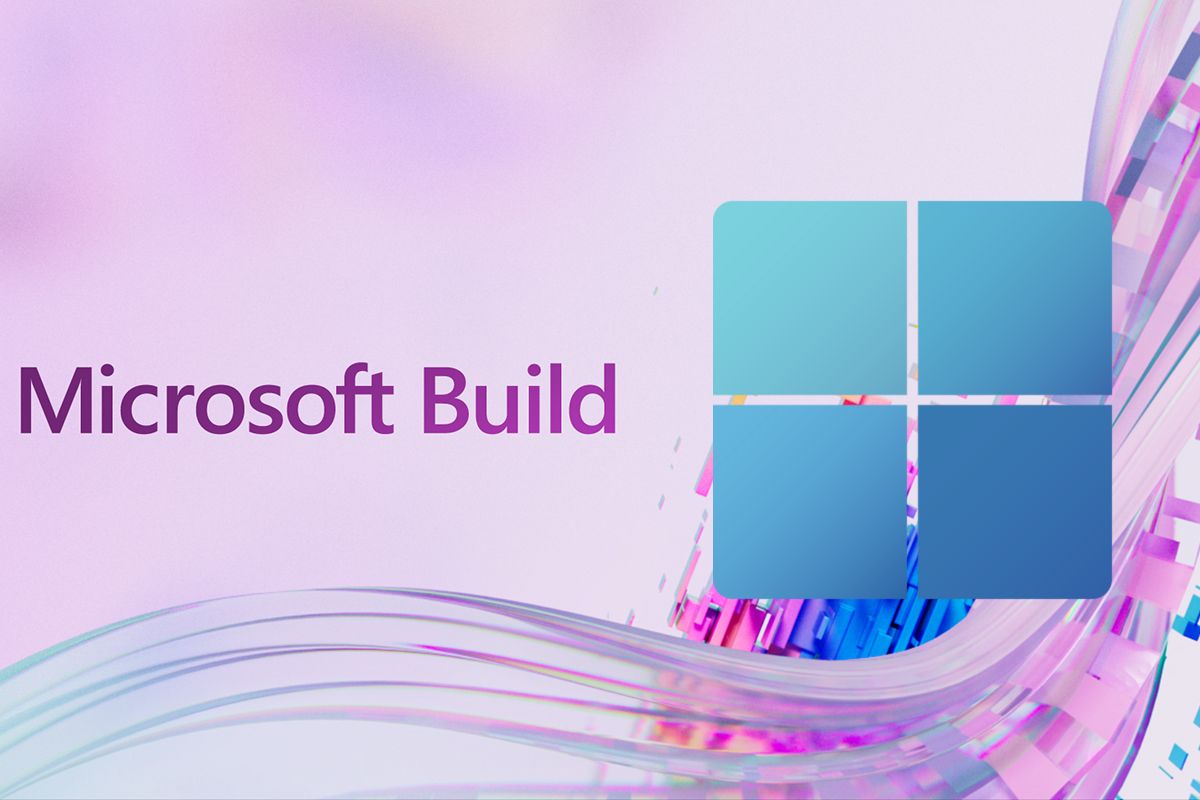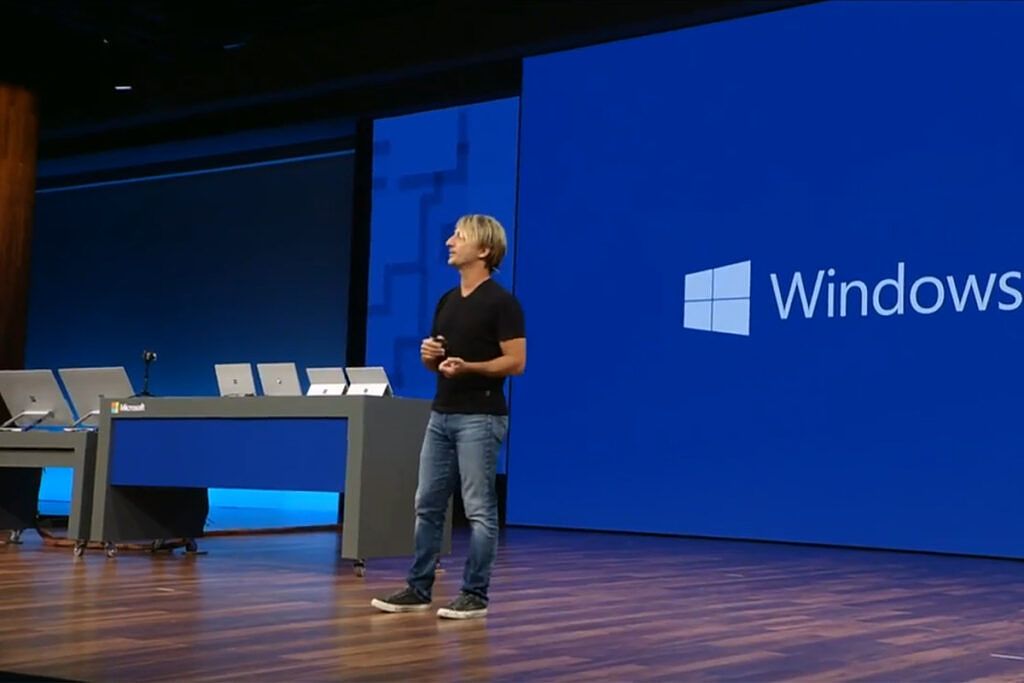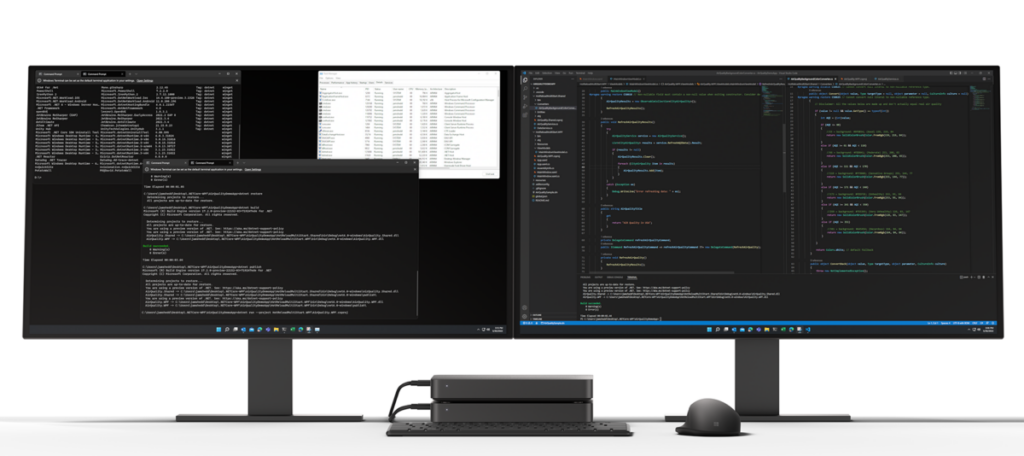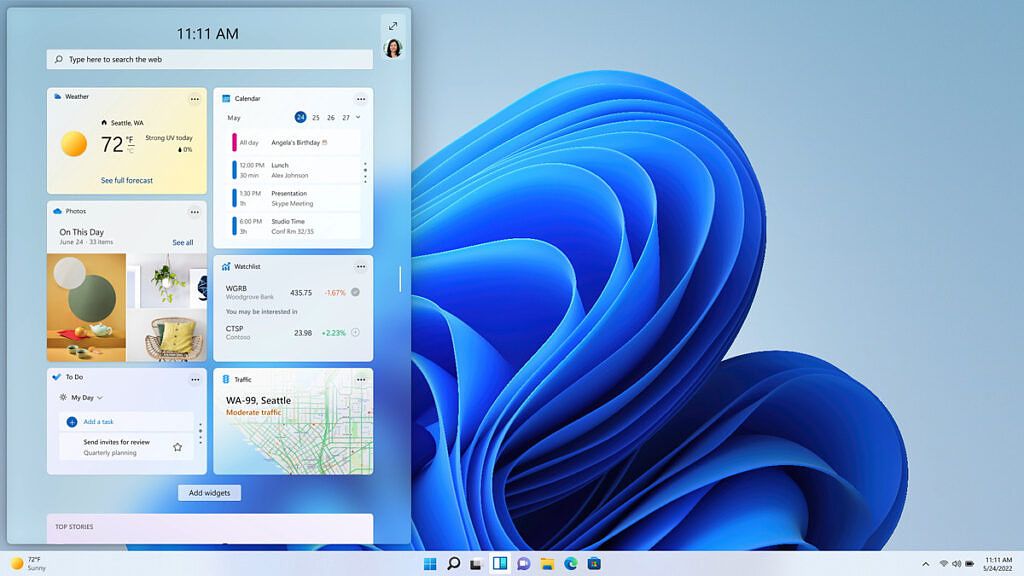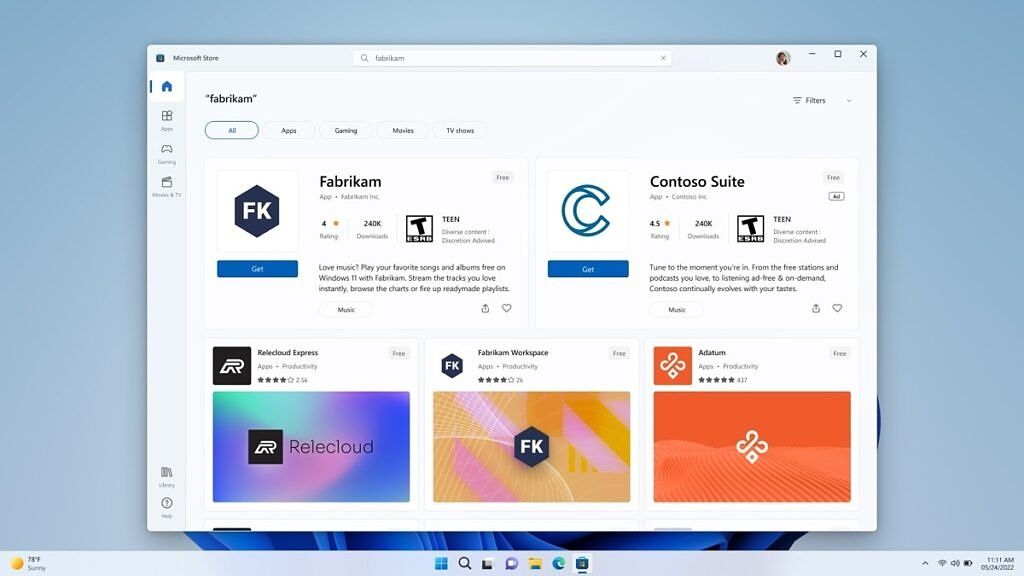Microsoft just wrapped up its Build 2022 developer conference, and frankly, it was pretty good, even if you're a Windows fan. I'm usually pretty vocal in my criticism of Build - along with other Microsoft conferences - and the continuing lack of focus on the company's desktop OS. But as is the case any time I'm critical of something that I care about, nothing makes me happier than to be able to admit that I'm wrong.
The company was clear from the beginning that it wasn't going to talk about Windows feature updates, and it promised to have exciting news for developers at Build. I expected this to revolve around things like WinUI, but in fact, that developer news does translate to stuff that should be exciting for everyone.
For example, Microsoft announced a whole bunch for Windows on Arm, third-party widgets on Windows 11, changes to the Microsoft Store, and more. That's a lot.
Why Microsoft doesn't talk about Windows at Build, and why it should
The last time the Redmond firm really talked about Windows features on stage at Build was in 2017. Joe Belfiore showed off a whole bunch of features that were slated to arrive in the Windows 10 Fall Creators Update. In fact, when some of those features didn't ship, Microsoft decided that less transparency was the answer, rather than just admitting that some features got delayed, but that's a story for another time.
At Build in 2018 through 2020, the messaging seemed clear: Microsoft doesn't care about Windows anymore. It's the Azure company now. That's where the firm has seen the most growth, and that's where it's headed. Windows wasn't going anywhere, but if Microsoft got to write the headline, the headline was going to be Azure.
2021 was a bit different. The working from home boom caused a resurgence of the PC market, and suddenly Microsoft wanted to do something exciting with Windows again. In about nine months, it put together Windows 11 for a June launch, still keeping it away from Build.
For this year, you might have expected Windows 11 version 22H2. After all, Windows is back, it's more of a priority, and there's less of a reason to give it a dedicated launch. But still, that's not the case.
Build is a developer show, and Microsoft wants to emphasize that the news is aimed at developers. While Google and Apple show off more consumer-related news at their shows, Microsoft doesn't want to do that anymore. Of course, this is a very convenient way to just not talk about Windows, since all of the Azure news pretty much remains the same.
I also take issue with the sentiment. Consumer news is developer news. At WWDC in just over a week, Apple will announce new versions of iOS, iPadOS, macOS, watchOS, and tvOS. You can tune in to see what new features your iPhone will get this fall. Is it specific to developers? Probably not. There's little to do with new features that you can actually tailor your app for, coding examples, or anything like that. The same goes for the Google I/O keynote.
But here's why this is still important for developers. It's showing momentum for the platform. Microsoft not showing Windows features has historically been a signal that Windows simply isn't a priority. You can watch any Google I/O or WWDC keynote and walk away with no doubt that Google is running full steam ahead with Android, and Apple is all-in on iOS. And if they're all-in, then you should be as well, as a developer.
Still, even without Windows 11 feature updates being discussed, I think Microsoft put together a solid Windows show.
There were lots of new Windows things at Build
The show has been different since it went virtual in 2020. Even without Windows talk, there used to be talk about other products, with sessions like, "What's new in OneNote", "What's new in Edge", "What's new in Outlook", "What's new in OneDrive", and so on. None of those sessions exist anymore. Hopefully, that will change when these events go back to in-person and there's a real value that has to be offered in order for people to convince their bosses to provide the resources to attend. Remember, when Build was in-person, the cost for a ticket was almost $2,500, and that doesn't even include travel and accommodations.
But while new consumer-facing features weren't discussed, the Windows news was actually pretty significant.
Finally taking Arm64 seriously
I've been a fan of the concept of Windows on Arm since it was announced in December 2016. Windows has traditionally and primarily run on x86 processors; the whole ecosystem is built around Intel. The idea of supporting a new architecture was exciting to me.
The platform has had a slow start. Qualcomm's hardware has been lacking until recently, but more importantly, Microsoft has always treated it like a second-class citizen. For example, when the first Windows on Arm PCs launched, you couldn't even compile a native app unless it was UWP. Support for compiling Win32 apps as Arm64 native was coming later. Another example is that x64 emulation support didn't even arrive until October 2021 when Windows 11 shipped.
Windows on Arm was a big part of the Build announcements. Microsoft's headline was something called Project Volterra, although to me, the most significant announcement was an Arm-native developer toolchain. Along with other things like .NET 6, classic .NET Framework, VC++, and more running natively on Arm, Microsoft is also going to release an Arm64 version of Visual Studio 2022. With the Windows Subsystem for Android and Hyper-V already on Arm, everything is in place.
This is a big deal, because Visual Studio 2022 is one of the most complicated applications that Microsoft offers. The idea that a Windows on Arm machine could be all you need for software development is wild, and it shows a commitment from Microsoft.
That's where Project Volterra comes in. Volterra is actually hardware. It's a new dev box from Microsoft that uses a Snapdragon processor, and that's about all we know. It's not like the Arm64 dev box that was announced last year though. Last year's Snapdragon 7c-powered dev kit was for testing apps, not building them.
This one is all about building out AI experiences. Microsoft says that almost all future PCs will have neural processing units, like the ones built into Snapdragon chipsets. Combined with Azure using the new Hybrid Loop pattern, developers will be able to use Volterra to build these new AI applications.
Qualcomm has been pushing the AI angle for Arm for a while now. Indeed, the initial value proposition for Windows on Arm was cellular connectivity and battery life. But now, the base models for WOA PCs almost all are Wi-Fi only, and the battery life isn't being delivered as promised. However, the San Diego firm consistently talks about how much better it is than Intel at AI tasks with its AI Engine.
Third-party widgets are coming
When Microsoft first reintroduced the concept of widgets with Windows 11, you could only use the ones it offered. Coming later this year, any developer will be able to build widgets into their Win32 app or PWA.
In one session, the company briefly noted that it's exploring other places for widgets to be displayed on Windows. That means that we might see a return of widgets to the desktop, similar to how the search bar was added in a recent Insider Preview build.
You can restore apps from the Microsoft Store
It's funny, because it's starting to feel like everything new has already existed in a previous version of Windows. One feature that's returning from the Windows 8 era is the ability to restore apps on a fresh installation of Windows 11.
Of course, this only applies to apps that you've downloaded from the Microsoft Store. Windows can't exactly go and fetch Google Chrome for you, so you'll have to handle that one yourself.
This is a feature that has existed on mobile for ages. When you go and upgrade your phone, it's easy to automatically install all of your apps. Now, Microsoft is trying to make that happen on Windows.
The good news is that anyone can put an app in the Microsoft Store now, no modifications needed. Microsoft also announced that it's eliminating the waitlist for Win32 apps.
Windows Subsystem for Android improvements
The Windows Subsystem for Android is getting better. For one thing, it's now running on Android 12.1. However, the big news is that it, along with the Amazon Appstore on Windows 11, is going to be supported in five new countries.
While WSA is currently only available in the United States, it's coming to France, Germany, Italy, Japan, and the UK. Unfortunately, the timeline is "before the end of the year".
Ads in the Microsoft Store
OK, so none of us are excited about advertisements, and that's OK. Still, it's the idea that Microsoft is investing in the Store that matters. It's providing developers with inventives and opportunities to distribute their apps through its marketplace.
First of all, developers will be able to advertise their apps in the Store, and you'll need to be a published developer to be able to do that. This is something that's common in app marketplaces and search engines.
There's also a new pop-up store feature on the web. That's where developers will be able to advertise their app, probably on their own website, and you can install it directly from there.
And finally, Microsoft Store listings are going to show up in Windows Search results. This isn't actually an ad, but it's still a call to action to download an app.
To be clear, advertisements aren't bad, and I say that because that's probably the immediate reaction many of us have when we hear the word "advertisement". Ads are necessary for a thriving commerce ecosystem, so this is all good stuff.
Microsoft Build 2022 was exciting
Like I said, there was no talk about Windows 11 version 22H2, or the features that it will offer. That's fine, even though the timing would have lined up for that. But all in all, Microsoft Build 2022 was an exciting show for Windows enthusiasts like myself.
Microsoft showed more interest in Windows on Arm than it has since the platform was introduced. Indeed, it was introduced as a way to spark innovation from Intel, which was mostly producing stale products at that point. But with Apple doing so well using Arm processors, it seems like a major investment is in order.
If you just want to know the next new features that are coming to Windows 11, this wasn't the show for you. But if you're just a fan of the platform and where it's heading, Build 2022 was awesome.

